 Well, hello there readers of the Homebrewing.org blog!
Well, hello there readers of the Homebrewing.org blog!
My name is Leigh Erwin, and I am a brand-spankin’ new home winemaker! E. C. Kraus has asked me to share with you my journey from a squeaky-clean new home winemaker to what I hope will eventually be an expert! Well, maybe not an expert, but perhaps “more experienced”.
Over the next few months I plan on sharing with you my experiences as a beginning winemaker: the good, bad — and the ugly. I hope all of you will take the journey with me as I periodically post my trials and tribulations as a first-time home winemaker on this blog.
—————————————————————————————————–
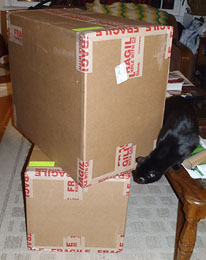 Today is a great day for me, as it is the day I received my very first home winemaking kit from Homebrewing.org. The UPS guys dropped it off at my house before I got home, so I had to wait a couple of hours to open my new “babies”.
Today is a great day for me, as it is the day I received my very first home winemaking kit from Homebrewing.org. The UPS guys dropped it off at my house before I got home, so I had to wait a couple of hours to open my new “babies”.
I ordered my items on November 14th, and received the items in one piece 5 days later, just as promised. The whole ordering experience was really easy for me. I had a couple questions for customer service, and they addressed them all very quickly. I placed the order in the morning on 11/14, and it was packaged up and shipped out that very same afternoon. I’m not sure if it’s always sent out the same day—it probably has to do with what time of the day you place your order, but since I placed my order so early, it was no problem!
Even though this is my first time making my own wine, I do have quite a bit of book knowledge about wine and winemaking. I decided to order a beginner wine making kit, as I felt this would be a perfect start for someone who has only read about winemaking but never actually practiced it. I chose a white wine, as I know the holidays are coming up, and since mine and my fiancé’s parents only drink white wine, it would be a nice gift to bring to them (provided I don’t mess it up!) at that time.
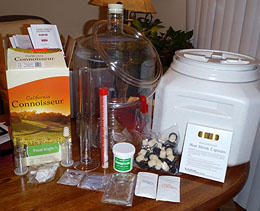 So, what did I order??
So, what did I order??
The main item(s) I ordered was the California Connoisseur Winemaking Kit, Pinot Grigio. When I opened the box, everything that was listed as being present was accounted for, and nothing appeared to be damaged.
What does this kit come with? Well, I received the following items all for one price by getting the Connoisseur Winemaking Kit:
- Wine Yeast
- Bentonite
- Potassium Metabisulphite
- Potassium Sorbate
- Fining agents
- 1 – 9 Gal. Tuff-Tank with Rubber Stopper
- Plastic 6 Gal. Carboy with Rubber Stopper
- 2 – Air Locks
- 21″ Curved Racking Tube
- Racking Tube Clamp
- Triple Scale Hydrometer
- Hydrometer Jar With Base
- Vinyl Racking Hose
- 24 Inch Stirring Spoon
- Wine Bottle Brush
- 5 oz. CleanPro SDH Cleaner
- 50 Heat-Shrink Capsules
- 30 Mushroom Style Corks
- Instructions
So much stuff for such a small price! I took a picture of everything I received, so see for yourself!
I’m really excited to start making wine with this beginner wine making kit, and am really excited to share my journey with you. Feel free to leave comments on if you think I’m ever doing something not quite right, if you have advice for me as a newbie winemaker, or maybe even words of encouragement!
Cheers!
#Leigh


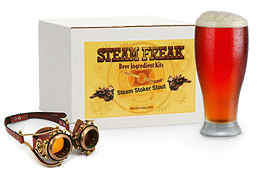

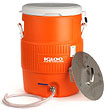


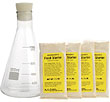
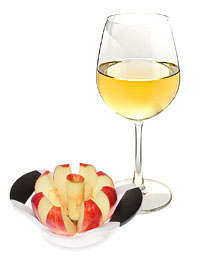 Can you make wine from cut up apples instead of using only juice. I found recipes for all kinds of whole fruit, but not apples. I have made several batches of wine with your products and they have all turned out well. I have a large apple tree and would like to make apple wine, but don’t want to squeeze the juice. I have made chokecherry and blueberry that are wonderful.
Can you make wine from cut up apples instead of using only juice. I found recipes for all kinds of whole fruit, but not apples. I have made several batches of wine with your products and they have all turned out well. I have a large apple tree and would like to make apple wine, but don’t want to squeeze the juice. I have made chokecherry and blueberry that are wonderful. In several earlier posts, we introduced a few home winemaking terms that you may or may not be familiar with. There are many terms to learn in home winemaking, and this post, like all the previous posts, gives you a short introduction to a few of those terms to help you get started in home winemaking, or perhaps brush up on some of the terms you may not have seen in a while.
In several earlier posts, we introduced a few home winemaking terms that you may or may not be familiar with. There are many terms to learn in home winemaking, and this post, like all the previous posts, gives you a short introduction to a few of those terms to help you get started in home winemaking, or perhaps brush up on some of the terms you may not have seen in a while.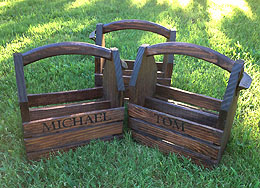 The holiday season is upon us and all you’ve got to offer is a closet full of homebrew. But don’t worry! Beer makes an excellent gift — especially for us beer geeks! With homebrew, you can be pretty sure that your gift won’t get tossed in a closet and forgotten about. Plus, it’s a gift that someone can enjoy, share with others, and create lasting memories around.
The holiday season is upon us and all you’ve got to offer is a closet full of homebrew. But don’t worry! Beer makes an excellent gift — especially for us beer geeks! With homebrew, you can be pretty sure that your gift won’t get tossed in a closet and forgotten about. Plus, it’s a gift that someone can enjoy, share with others, and create lasting memories around.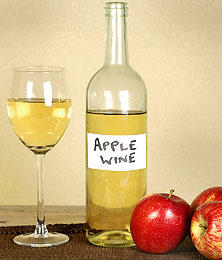 I am into the 5th day of the 2nd fermentation of my apple cider. I took a sample of the cider yesterday and found it to be very dry and cloudy. I have two questions. 1) Can I add sugar at this point to sweeten or will this just increase the alcohol content? 2) Can I add pectin at this time or is that only mixed with the must? Or is there a better fining additive? Thank you.
I am into the 5th day of the 2nd fermentation of my apple cider. I took a sample of the cider yesterday and found it to be very dry and cloudy. I have two questions. 1) Can I add sugar at this point to sweeten or will this just increase the alcohol content? 2) Can I add pectin at this time or is that only mixed with the must? Or is there a better fining additive? Thank you.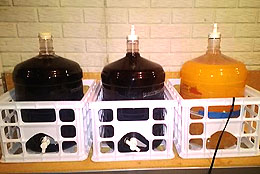 I’ve recently started making wine again after about ten years away and, of course, the changes in
I’ve recently started making wine again after about ten years away and, of course, the changes in